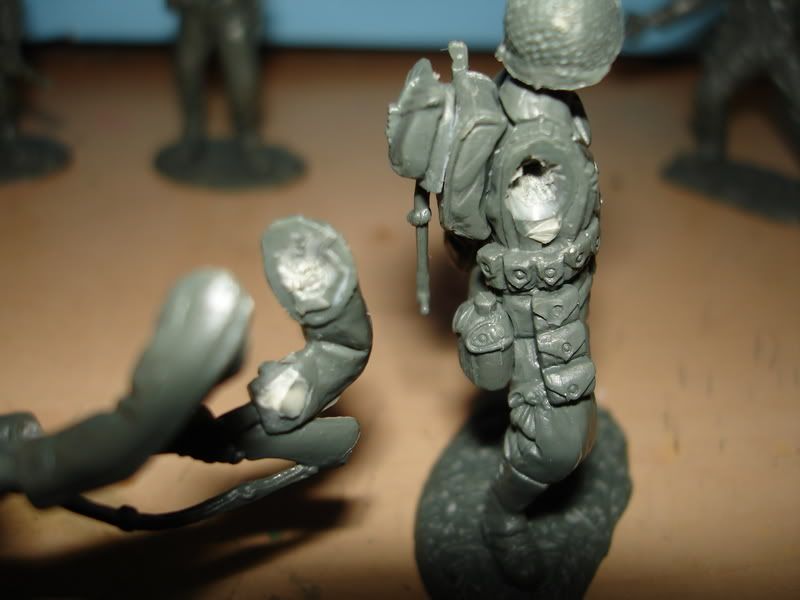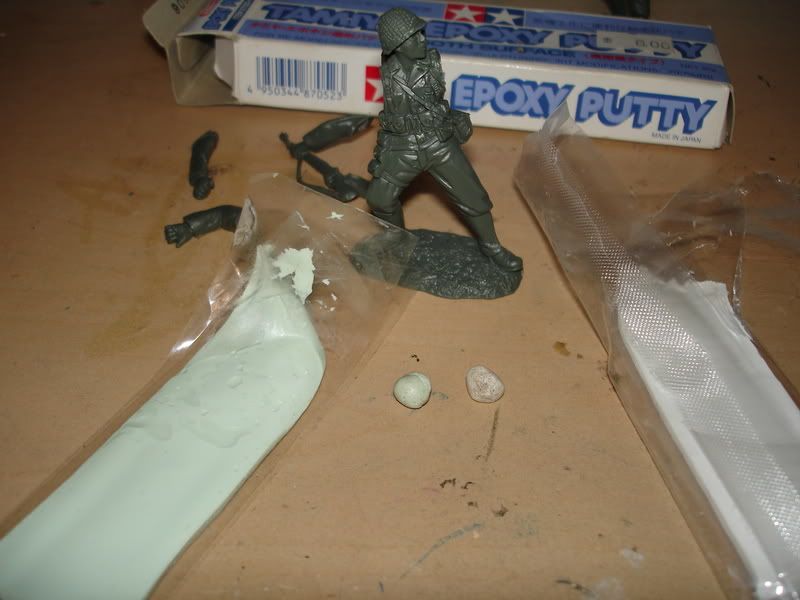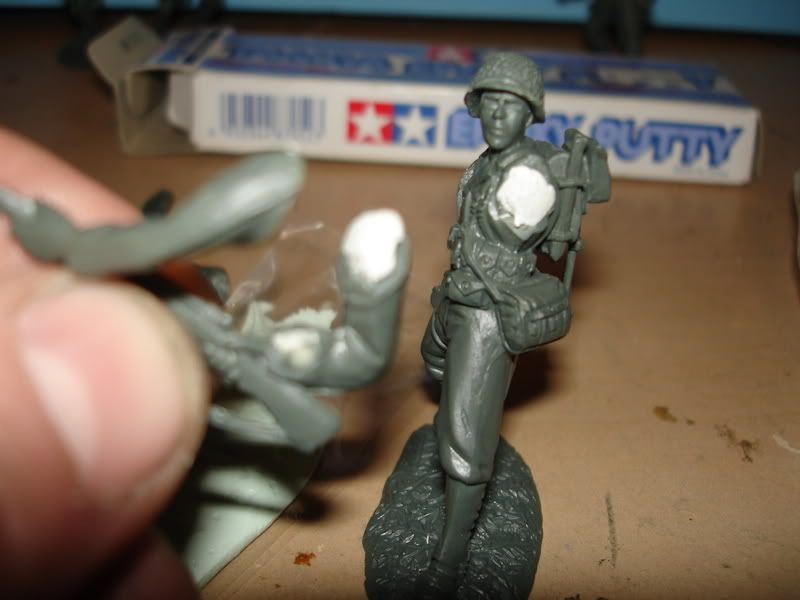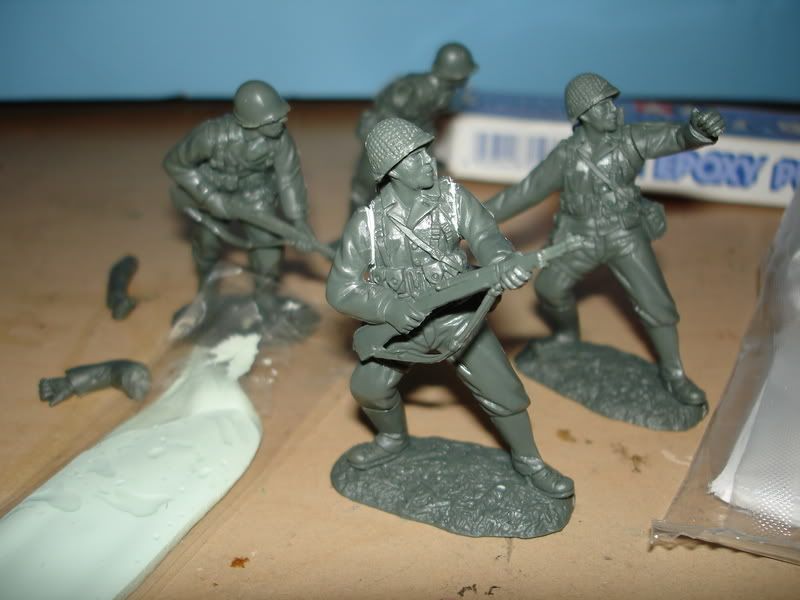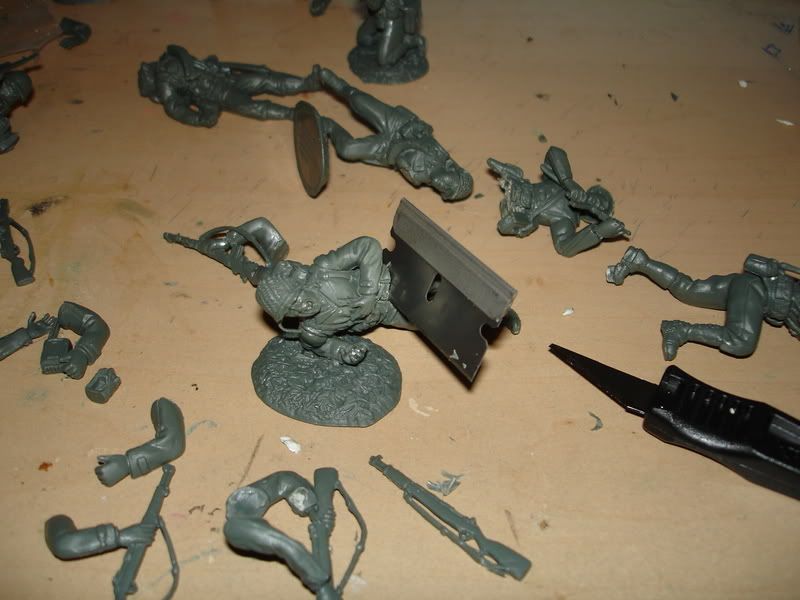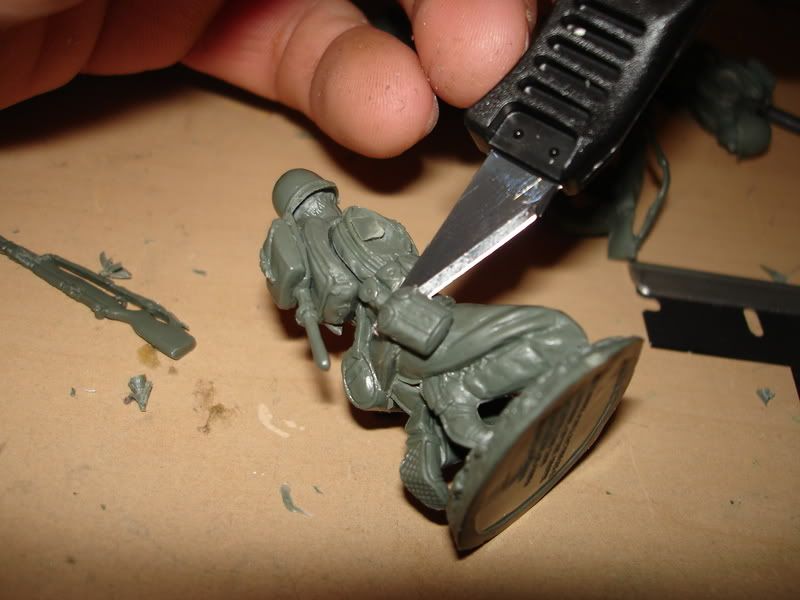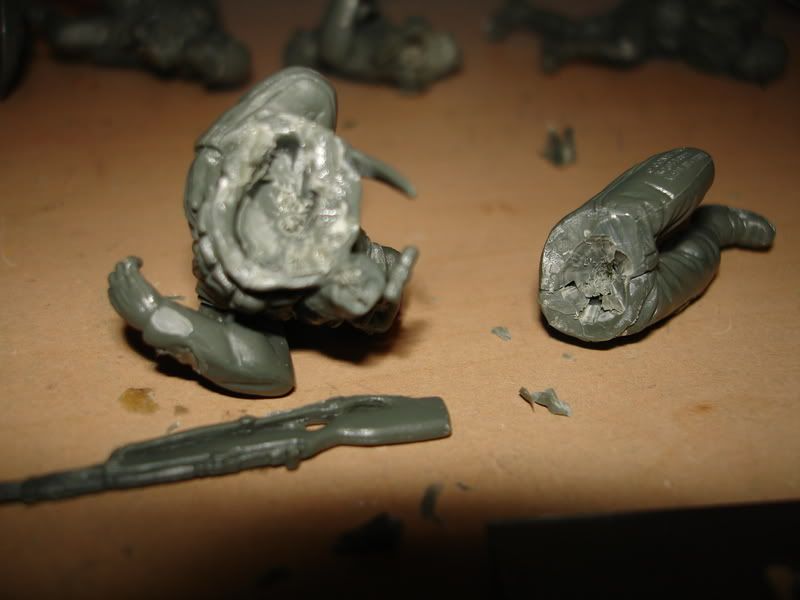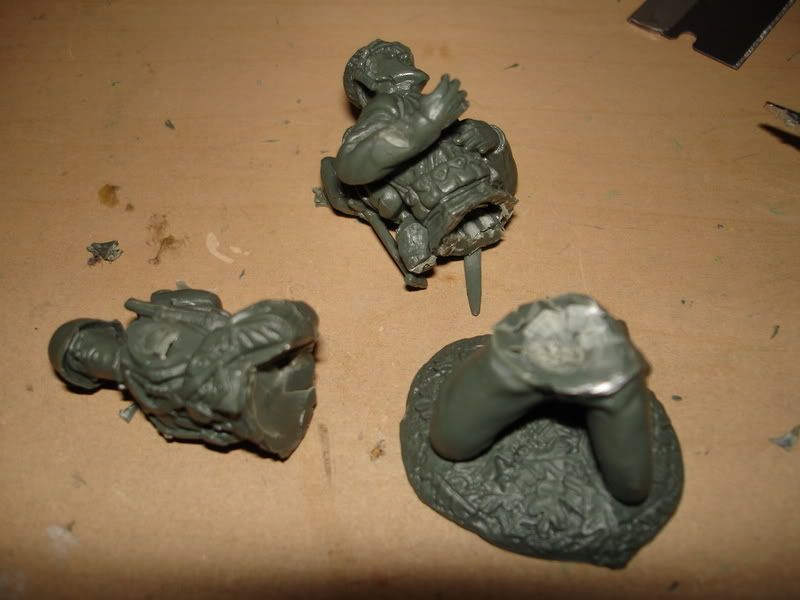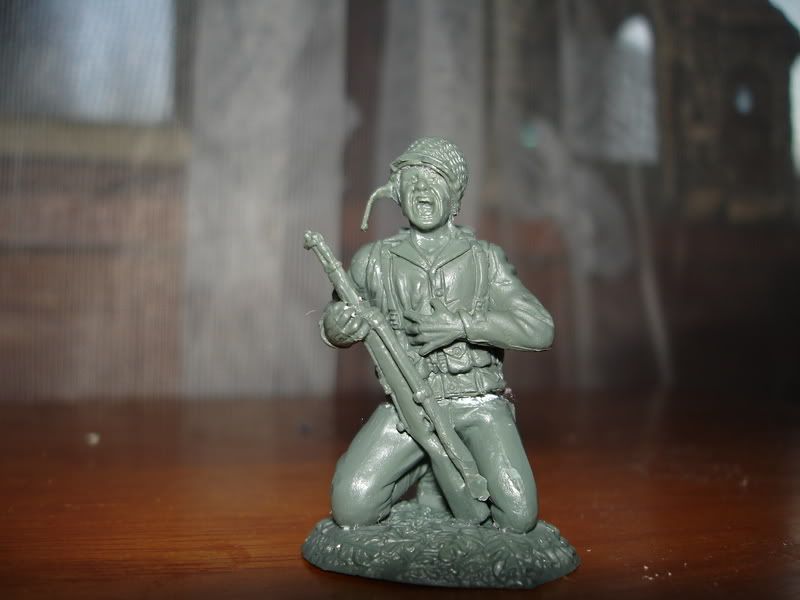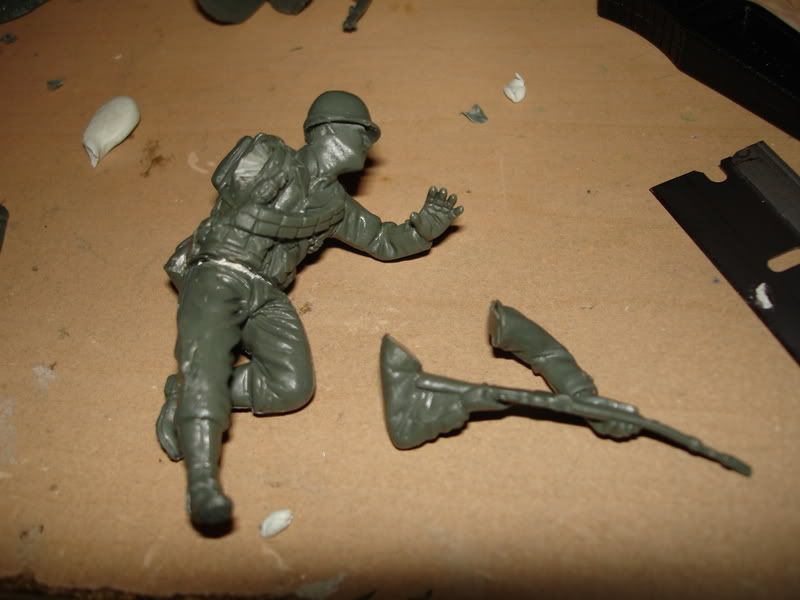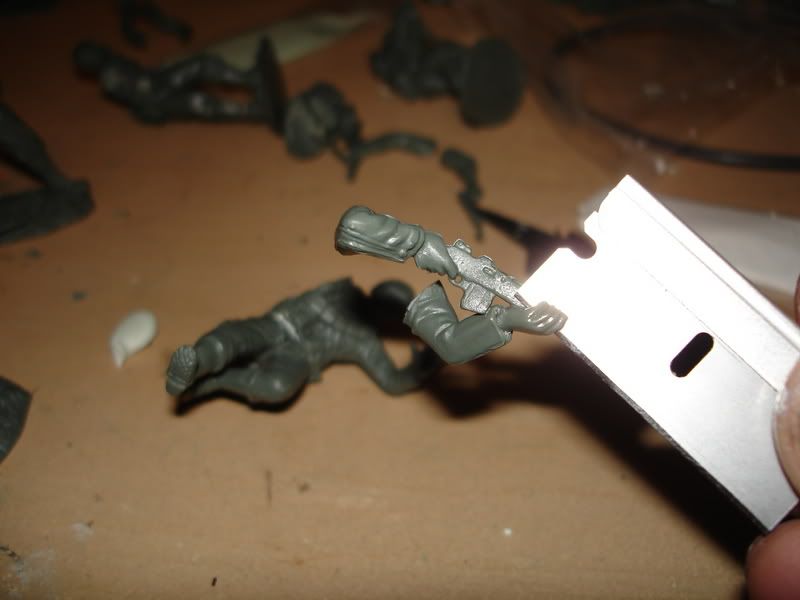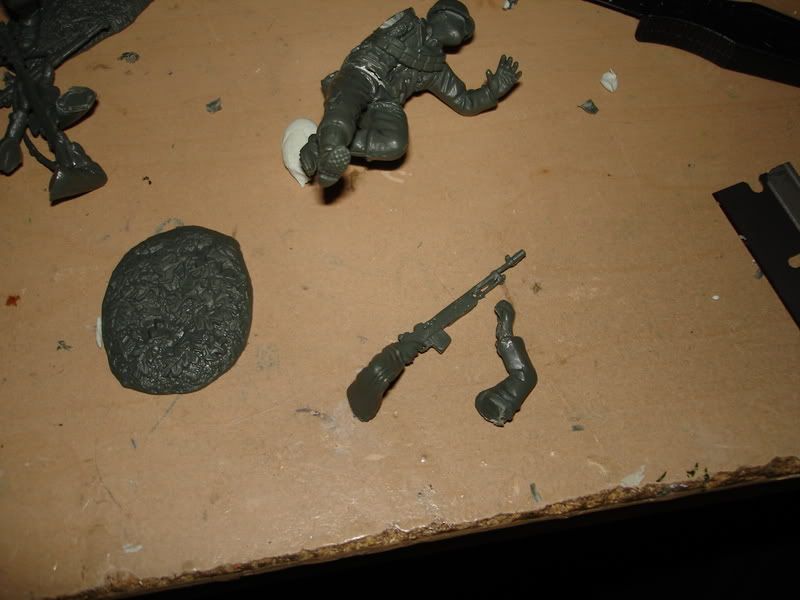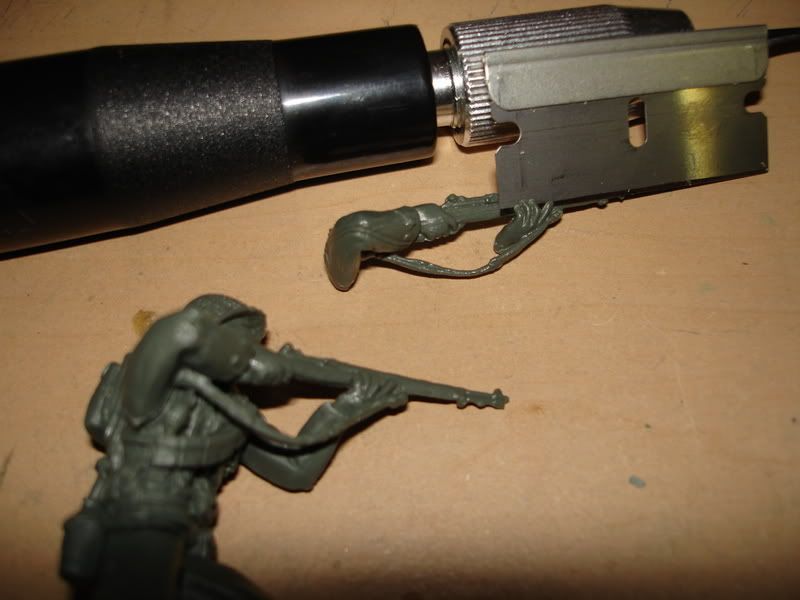fishead19690
Command Sergeant Major
- Joined
- Nov 3, 2005
- Messages
- 2,555
I figured I,d start a thread on how I convert my plastic figures with some pictures added in of the tools and supplies I like to use and maybe we can share some ideas and walk through a couple of figures with a step by step of how we each do ours and maybe we can learn something from each other and trade some ideas.
I,ll try and get us started with the tools and stuff that I use and walk through a couple of conversions. Lets start with what to use or at least what I use as I know we all have our own way of doing things which is what could make this thread interesting.
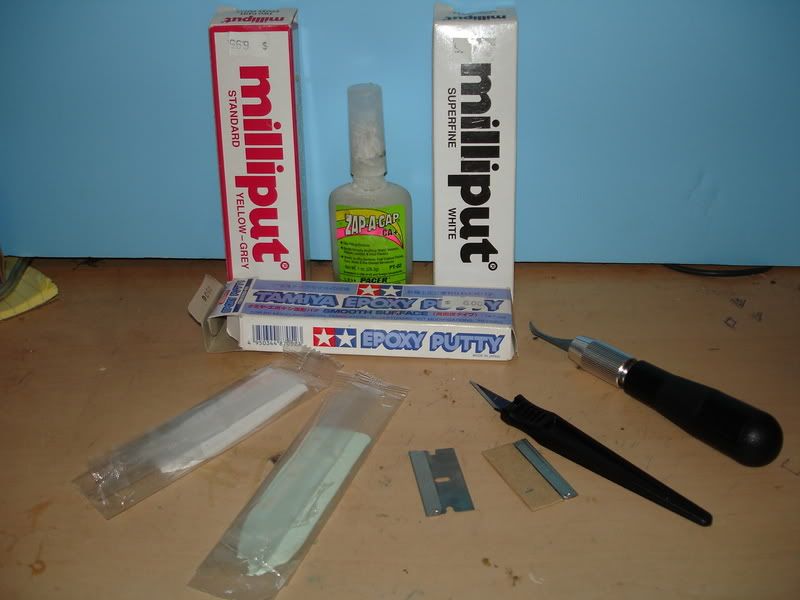
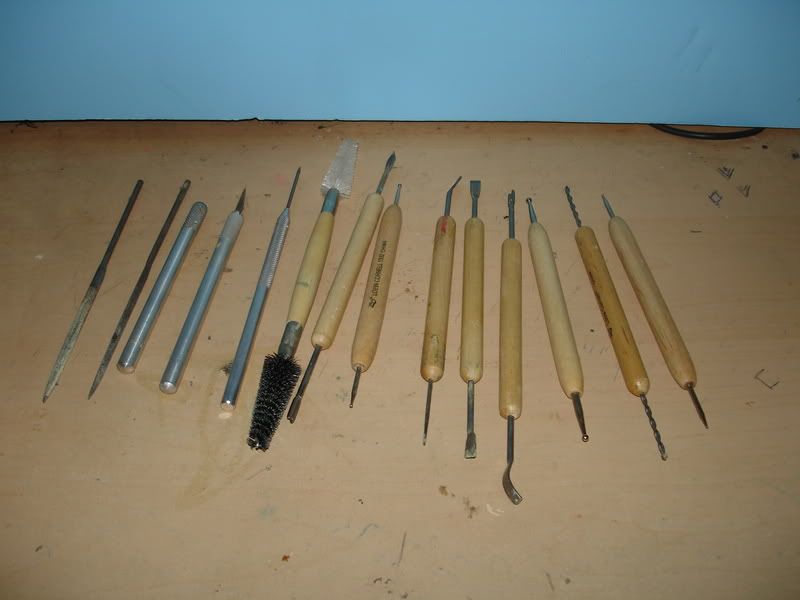
The first picture is what I use to cut the figures and the 2 part putties that I use and also my favorite glue zap a gap.
The second photo is some tools that I like the use to shape the 2 part putty and some small files.
I,ll try and get us started with the tools and stuff that I use and walk through a couple of conversions. Lets start with what to use or at least what I use as I know we all have our own way of doing things which is what could make this thread interesting.


The first picture is what I use to cut the figures and the 2 part putties that I use and also my favorite glue zap a gap.
The second photo is some tools that I like the use to shape the 2 part putty and some small files.


